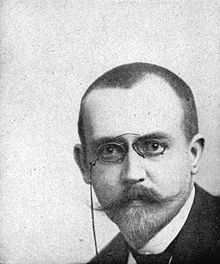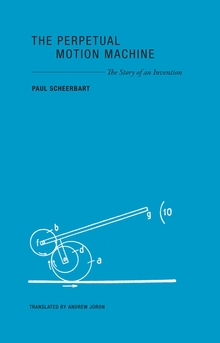Review of The Conductor and Other Tales by Jean Ferry
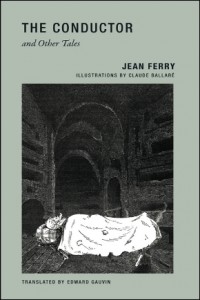 The Conductor and Other Tales
The Conductor and Other Tales
by Jean Ferry
Wakefield Press, Nov 2013
176 pages / $13.95 Buy from Wakefield Press or Amazon
The biggest initial draw to this neglected collection of stories by avant-gardist Jean Ferry is his associations with other big names in French cinema and literature. Names like Buñuel, Carné, Malle, and Breton get dropped through the introductory materials to this edition, the first of his works to be fully published in English. Despite all these associations, the ultimate sensation one gets after reading this work, Ferry’s only collection of fiction, is that he’s not so easily lumped in with the surrealist or pataphysic movements that attempted to swallow him into their pigeonholes. Instead, as translator Edward Gauvin states in his introduction, “Ferry is the exception to every movement he’s been in,” a claim that ironically puts him further in line with the ideals of pataphysics .
The easiest way I can understand pataphysics is to say it’s the layer outside of metaphysics. Seeing as metaphysics is already shaky ground for thought systems, how does one breach the pataphysical level? Ferry’s method, in the handful of stories that best align themselves with this short-lived tradition, is to introduce a story very simply and unassumingly. The story then leads the reader subtly into abstract territory where one can infer a number of metaphors throughout the narration, ones that give the text its weight, just like any other well-executed traditional literary text. But what Ferry does is extends the metaphor further, going off into a tangent that speeds like a rocket, flying through incidents and ideologies it has no time to explain, but only enough to introduce in passing, making the end result of each of these bite sized stories, when looking back over them, akin to a godly perspective, where earlier particulars lose their distinctions.
The etymology of the term avant-garde derives from the group of soldiers sent into the battlefield earliest to scope out the situation. The job requires simultaneous sensitivities to caution, intuition, timeliness, and luck. Ferry’s take seems to be to speedily pull the avant-garde as far as he could take it, to sprint into the most vulnerable area of the form and celebrate it unabashedly. Instead of creeping around the bushes and trying to figure out the terrain, Ferry runs full speed through the deathly silent tension of a potential warzone, using luck as his only strategy. In this way Ferry doesn’t have time to go back and worry about if the path his narrative took may have been the wrong one; he doesn’t give himself that luxury. The intention is to go somewhere far beyond the point where normal beyond seekers are already going.
The first story, “Notice,” begins with a meta narrative of the collection, about the uncertainty of its publication, let alone shelf life. Instead of being stuck in worry and using that worry to craft embarrassing or tryhard lines wrought with uncertainty, Ferry storms through, forgetting the topic of his manuscript, and instead turns attention to the adventures of the desk drawer it’s housed in, following it all the way to its destruction only a couple of sentences later, where he returns to the manuscript papers as they are used to stuff a package on its way to Africa, making sure to note along the way that “none of this is implausible.” His manuscript is found, recorded into a Dictaphone, and translated into an esoteric African language. Red ants eat the manuscript, and the African tribe for which the manuscript was translated eventually goes extinct, aside from one member who finds the Dictaphone, and becomes the sole audience for this book. Ferry ends the tale, “I write for that black man.”
Although ‘Notice’ highlights Ferry’s methods, it neglects the themes that frequent this collection, the most prominent of which is fatigue. In what I think to be the best story in the collection, “Traveler with Luggage,” fatigue infects the mind that’s recovering from a mental breakdown to not only weigh it down like an anchor, but to set up sporadic snares for it to get trapped in. It seems that to Ferry, exhaustion and its resulting laziness is the greatest hurdle humanity has to overcome, and our light treatment of it results from our inability to understand its truly horrific nature. The veneer of comfort in leisure seamlessly morphs into insanity, and by the time it’s understood, one has “neither willpower, nor the will to have willpower.” For the creative narrator of this story, when stuck in such a predicament, one where laziness dismisses the need to be creative, only to replace it with nothingness, life itself takes on an unreal and unwelcoming tinge. “It was the most abominable dream I’d ever had, and it was no dream.”
“The Conductor” is the most polished piece of fiction in the entire collection, and best shows off Ferry’s skills in allegorical creation and pataphisical method. The person that the conductor addresses from the beginning, which could have been you, the reader, leaves at one point, but the conductor continues speaking, announcing, “believe me, we sure are making tracks.” What extending metaphors, storylines, and other forms beyond their limits like this does is allows us to illuminate the substance of the metaphor and everything around it, and get far enough away from it so that perhaps we can see the full picture of that substance, perhaps to check if we may have missed something inherent to it.
This small yet potent collection has too much to discuss in one brief review. Stories like “Kafka, or ‘The Secret Society,’” “My Aquarium,” “On the Frontiers of Plaster (A Few Notes on Sleep)”, and “Childhood Memories” all have a uniqueness that makes this book highly worthwhile. The illustrations by Claude Ballaré that appear before each story are a very welcome complement that add to the dark Romantic feel of the stories. For fans of quirky, bleak, and short French fiction from the post-surrealist era, this book is a new must have.
January 27th, 2014 / 10:00 am
A Handbook for the Perfect Adventurer by Pierre Mac Orlan
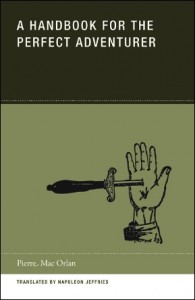 A Handbook for the Perfect Adventurer
A Handbook for the Perfect Adventurer
by Pierre Mac Orlan
Trans. by Napoleon Jeffries
Wakefield Press, October 2013
104 pages / $12.95 Buy from Wakefield Press or Amazon
It’s easy to be intimidated by a dude who has written upwards of 130 books, not counting flagellation erotica. But then you take a look at the sketch of him on A Handbook’s first page, labeled “Private First Class Pierre Mac Orlan, Military Cross,” and (if you are like me) immediately relax:
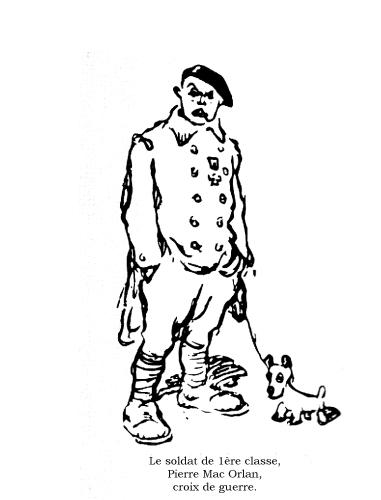
That’s the story of reading A Handbook for the Perfect Adventurer. Peppered with (actual, academic) footnotes, headed by chapter titles like “The Various Categories of Adventurers” and “On the Role of the Imagination,” you get the sense starting out that you’re delving into some serious study of the adventurer’s role in early 20th century French literature.
Part of this weird effect comes from what Wakefield Press does with the book. Design is stark, almost academic—but handbooky, too, with that authoritative streak the pocket-guide folks always mean to bestow. The 13-page introduction (and this is for just over 50 pages of content) has actual history in it, from a brief discourse on the French novel at that time to a contextualization of the book within the aftermath of World War I. Even the translator’s remarks on A Handbook’s inherent, decontextualized value is a sober meditation on its potential synecdochic value with relation to the history of adventure at large.
But once we get into the text, the book turns out to be pretty fucking hilarious. Mac Orlan keeps you on the rocks for a while, taking pains to distinguish the “active” from the “passive” adventurer, the cavorting blockhead from the armchair fiend of imagination. It’s still possible, in these early sections, that he’s entirely serious about the theoretical structure he’s setting out. Until we start getting stuff like the list that accompanies an account of the Active Adventurer’s troubling youth:
The Sad Setting Adopted by the Young Adventurer
The frog inflated by a simple straw.
Goldfish swimming at the surface with the help of corks pinned to their backs.
June bugs pulling a tiny scrap of newspaper through the air from their backside.
The fly without wings.
The ridiculed dog.
It goes on. Details like this end up being a serious redeeming factor of A Handbook for the Perfect Adventurer. There’s something about their oddball quality that tingles for having crossed the century in the way it has: slowly, as only three of Mac Orlan’s books had been translated into English before this one. It feels good that there were folks in 1920, too, who prioritized being funny and a pain in the ass, leaving more “serious” tomes to the hand-wringers.
Though with the tongue-in-cheek mode, as we know, a whole lot that is of interest can be conveyed anyway. There is certainly something being said about the dreamer here, when Mac Orlan outlines the strict “exercise” regimen the Passive Adventurer must undertake:
If one considers Passive Adventure as an art, some natural gifts have to be allowed for in future initiates. These gifts must be practiced and perfected. It is a question of intellectual gymnastics that include daily exercises and in particular the methodical training of the imagination.
The cool thing here is that he’s not affecting a take-down of anyone in particular. Sure, he’s giving a reasonable amount of hell to the person whose pulse begins to race at the words on a page that represent a steaming sea battle, or a life-altering meeting with the natives of a remote island. But this is more of a poke at the idea of adventure at large. (Ah, Napoleon…the introduction was right!)
While Napoleon Jeffries’ portion of the book remains fairly staid, aiding Mac Orlan’s straight face, even he occasionally jumps in on the fun in the text of a footnote. Eye the prioritizing of information in this one, one of many clarifications of Mac Orlan’s name dropping in the text:
26…Adolphe Thiers (1797-1877) was a politician, historian, and in Karl Marx’s words, a “monstrous gnome”; his best known work is the multivolume History of the French Revolution.
By the end of A Handbook, we’re digging it. Under the heading “Benefits an Adventurer Can Gain from Traveling,” Mac Orlan has included:
Seasickness.
The adventurer is exploited like a milch cow.
The adventurer is too hot.
Tortures pertaining to entomology.
Boredom.
Disgust.
The self-same chapter ends, totally inexplicably, with the single paragraph:
November 15th, 2013 / 11:00 am
WAKEFIELD PRESS REVIEW: THE YOUNG GIRL’S HANDBOOK OF GOOD MANNERS
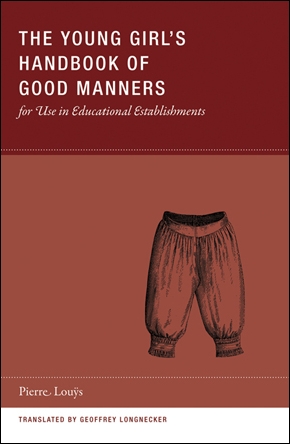 The Young Girl’s Handbook of Good Manners for Use in Educational Establishments
The Young Girl’s Handbook of Good Manners for Use in Educational Establishments
by Pierre Louÿs, translated by Geoffrey Longnecker
Wakefield Press, March 2010
80 pp. / $12.95 Buy from Wakefield Press
The first time I ever heard of Pierre Louÿs was when I read Susan Sontag’s essay, “The Pornographic Imagination.” In it, among other things, she posits five works of literature that bridge the gap between pornography & erotic, expanding into very Literary territory. Louÿs’s book was the only I hadn’t read. I tracked it down–it’s title The She-Devils–and was sorely disappointed in the translation. Despite this, I had still enjoyed the narrative, and filed the name in the back of my head to keep at bay in my never-ending path through erotic literature.
Years later, Louÿs’s name came up again–but this time as a correspondent of Mallarmé. It might strike some as strange that Mallarmé–who has probably garnered as many stuffy academic essays as God himself (though I prefer the former far more than the latter, let it be said)–chafed elbows, so to speak, with a man whose primary literary concerns were pedophilia, scatology, and whores. Louÿs was a part of the vaguely shaped Symbolist movement in France as the 19th century slipped into the 20th, immediately following the Fin de Siecle ‘movement’ that had shown artists and writers that certain ideas were now available subjects. Baudelaire was a major influence on the symbolists, as was Edgar Allen Poe.
Louÿs is most often considered a novelist, but the brilliant Young Girl’s Handbook of Good Manners instead takes the form of a satirical handbook–lampooning school guides to “good manners” and instead positing sixty pages of sexual advice, tongue planted firmly in cheek. It could perhaps be considered that this could become, shall we say, boring, or perhaps overdone, but Louÿs is a master parodist, in addition to being a damn good writer, so the laughs just keep coming.
I’m not one for humor unless it’s delivered via a sort of combination of hyperbole, absurdity, and base-ness, which the Handbook delivers in spades. The aphoristic fragments are all structured under headings, such as “Games and Recreations” (“Never masturbate a young man by the window. You never know on whom it might fall.”), “At the Ball” (“If you cum while waltzing, say so softly; don’t shout it out.”), and even a special column, “On Losing Your Virginity.”
There is no narrative thread, only a bawdy romp to be followed, with aphorism after aphorism delving into a perversely juvenile mind. There’s a total jouissance present in many of the acts which Louÿs implores ones not to do, and this set-up provides the idea that young girls are performing these acts with regularity (and who knows–perhaps they are; I was never a young girl).
– – – – – – – – – – – – –
Former WAKEFIELD PRESS reviews:
TREATISE ON ELEGANT LIVING by Honoré de Balzac
August 15th, 2013 / 11:06 pm
WAKEFIELD PRESS REVIEW: Introduction & TREATISE ON ELEGANT LIVING
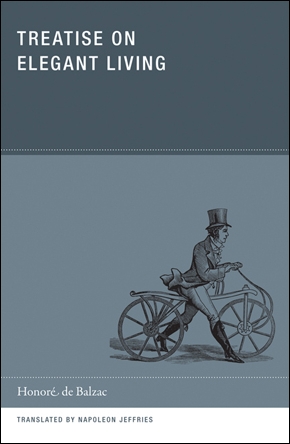 Treatise on Elegant Living
Treatise on Elegant Living
by Honoré de Balzac, Translated by Napoleon Jeffries
Wakefield Press, March 2010
112 pp. / $12.95 Buy from Wakefield Press
Wakefield Press describes themselves, on their website, as “an independent American publisher devoted to the translation of overlooked gems and literary oddities in small, affordable, yet elegant paperback editions.” The fact that they are a publisher dedicated specifically to translated “buried” texts, so to speak, has kept them on my horizon since their launch in 2010. As the press has developed, they’ve continued to release incredibly interesting (and, as is their goal, elegant) books by many authors and writers that populate the literary landscape that I prefer to frequent. Paul Scheerbart, who I learned of as a devotée to “glass architecture” in my readings on the architecture of the fantastique, has had two books released by the press, many (often absent) key players of French literature have books on the press (Marcel Schwob, Georges Perec & Rene Daumal to name a few), and even the authors I hadn’t formerly heard of seem tailored to my taste. As such, I thought it would be a brilliantly rewarding project to review every title the press has released.
Earlier in the year I reviewed their release of Rene Daumal’s Pataphysical Essays, and my enjoyment of everything about the book (from its content to its translation to the materiality of the book itself) lead me to consider the project. I had encountered the concept of reviewing an entire press’s output before, I think initially in JA Tyler’s review of Calamari Press’s output on BigOther. While I love Calamari press, their output spans, at this point, much wider than Wakefield Press, whose number of titles seemed both manageable and limited enough that I would enjoy the entire project. I had no interest in launching into the project & losing steam half-way through, as I knew that would be disappointing both on a personal level, and also probably a disappointment to the press. With these considerations in mind, I decided to dive in.
As I am a fan of chronology, I’ve decided to approach the Press’s released chronologically. This would serve to give structure to the project, and also provide me with a path through the meta-textual elements of the press itself, as they grew from a press having only published two books (their launch), into having published 10 books at this point, with more titles on the horizon. So without further adieu, I’d like to present the launch title of Wakefield Press (while I think it was released in tangent with Pierre Louys’s The Young Girl’s Handbook of Good Manners for Use in Educational Establishments, Treatise… is granted number “1” in the press’s subdivision of “Wakefield Handbooks”).
July 18th, 2013 / 4:52 pm
25 Points: The Book of Monelle
 The Book of Monelle
The Book of Monelle
by Marcel Schwob
translated by Kit Schluter
Wakefield Press, 2012
136 pages / $12.95 buy from Wakefield Press or Amazon
1. Let’s just start with the fact that this book made me cry. It’s an utterly heartbreaking book, beautiful in the torment and suffering that is manifested through its words. Though Monelle instructs, “Words are words while they are spoken. / Unspoken words are dead and beget the plague. / Listen to my spoken words, and act not according to the words I write,” these written words are the only spectral trace we have left of her.
2. I first heard about the new translation of this significant work at Harriet.
3. The synopsis of the book reads: When Marcel Schwob published The Book of Monelle in French in 1894, it immediately became the unofficial bible of the French symbolist movement, admired by such contemporaries as Stephane Mallarmé, Alfred Jarry, and André Gide. A carefully woven assemblage of legends, aphorisms, fairy tales, and nihilistic philosophy, it remains a deeply enigmatic and haunting work over a century later, a gathering of literary and personal ruins written in a style that evokes both the Brothers Grimm and Friedrich Nietzsche. The Book of Monelle was the fruit of Schwob’s intense emotional suffering over the loss of his love, a “girl of the streets” named Louise, whom he had befriended in 1891 and who succumbed to tuberculosis two years later. Transforming her into Monelle, the innocent prophet of destruction, Schwob tells the stories of her various sisters: girls succumbing to disillusion, caught between the misleading world of childlike fantasy and the bitter world of reality. This new translation reintroduces a true fin-de-siècle masterpiece into English.
4. The Book of Monelle is a book of words, like the Bible, these words may transcend its physical pages. In its biblical and prophetic tone, Monelle, perhaps herself a prophet, speaks of the beginning: “And Monelle said again: I shall speak to you of young prostitutes, and you shall know the beginning.”
5. If Monelle is a prophet, she is utterly of the present, of the moment, and of silence, because in life and suffering everything becomes a mirror to one’s suffering, and because in death there is only silence, but there is also the hope of forgetting.
6. Monelle instructs: “Do not remember, and do not predict.”
7. The translator gives two possible ways to interpret the name Monelle. First, the French translation that roughly translates into “My-her,” which implicates a strange hope for possession. Indeed, the narrator (whom we take to be Marcel’s tortured self) says, “And as I looked over the plain, I saw the sisters of Monelle rising.” Because every “her” is Monelle. And Monelle is every her. And yet, Monelle is of the past and infinitely elusive.
8. Monelle, its prefix derived from monos, then also implies a numeric singularity. Monelle is now and always alone. Schluter, in a footnote to his afterword, describes, “The infinite solitude that draws the narrator toward her is the very force that must ultimately repel him. In the end, no matter how we attempt to grasp her character, her name should be the first clue that Monelle will fade into abstraction in the fashion of a mirage or a dream recalled upon waking.”
9. Monelle speaks: “…for it is necessary that you lose me before you find me again. And if you find me again, I shall elude you once more. / For I am she who is alone.”
10. And then: “Because I am alone, you shall give me the name Monelle. But you shall imagine that I have every other name.” (Louise, Louvette, Lilly, Bargette…) READ MORE >
November 7th, 2012 / 1:01 pm
On journaling, ego, and Paul Scheerbart’s The Perpetual Motion Machine
Back in the day when I started to write fiction, I took a class called Gender & Writing. I must’ve been 21 or so. We read a lot of things, but what’s pertinent to this post is Virginia Woolf. The professor told us about her journals. We read some excerpts. They blew me away. And instantly, because of the egoist in me, I started to worry about people finding my old journals, how stupid I would seem, banal and delusional. Then, I felt moronic and delusional (again) for thinking I’d be so important that future scholars would be rifling through my old journals. Regardless, I stopped journaling by hand, not that I did much of it anyway, but reading through those journals today, I cringe at my youth and the way I made melodramas out of nothing.
Obviously, no one has bothered going through my journals, but my greatest fear manifested when I started reading Paul Scheerbart’s The Perpetual Motion Machine. Part journal, part delusional dream, Scheerbart’s beautiful little book narrates his toiled process of inventing the world’s first perpetual motion machine.
Let me back up, if you don’t know the name Paul Scheerbart, that’s ok. I didn’t either, but he was a proto-Dadaist, a novelist, playwright, poet, and his discussions of glass architecture played a role in Walter Benjamin’s The Arcades Project. But back in January 1908, he was poor writer dreaming of money, fame, and glory. In many ways, I applaud how he understood that he would not attain these goals through his writing, so he found another way: invention!
May 5th, 2011 / 10:49 am


